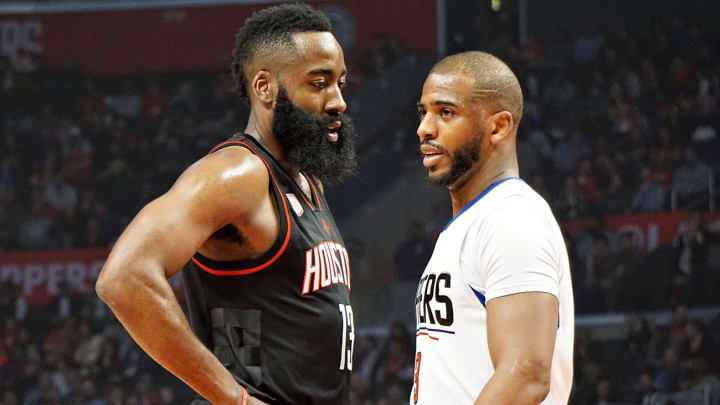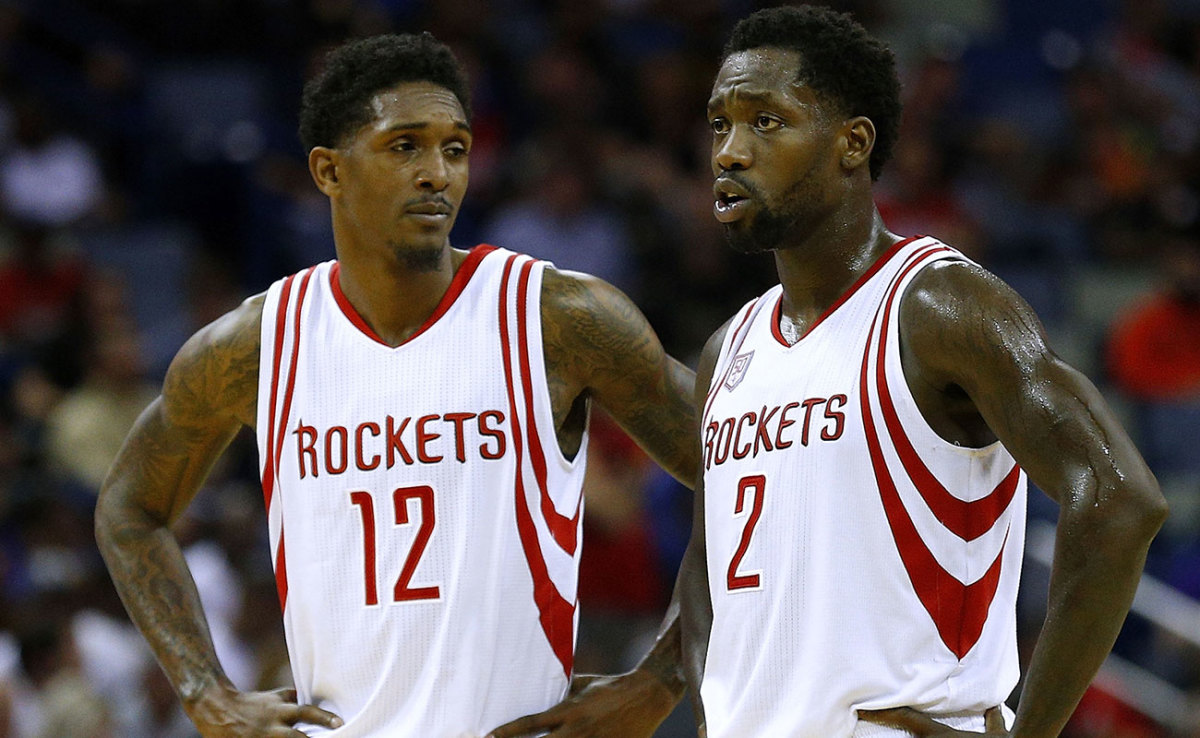Trade Grades: Rockets Join Superteam Arms Race With Chris Paul

The Los Angeles Clippers have traded Chris Paul to the Houston Rockets in exchange for Patrick Beverley, Sam Dekker, Lou Williams, Montrezl Harrell and a protected 2018 first-round pick, as first reported by The Vertical. This is not yet a complete transaction; although the fundamentals of the deal have been agreed upon, the Rockets will need to move a bit more salary in one way or another to make this a legal trade.
With the Clippers losing a franchise player and the Rockets gaining one, let's break down the trade and grade both sides.

Houston Rockets: A+
Two of the best point guards in the league are now on the Rockets. With that comes questions of fit, most of which should be undercut completely by the practical reality that Houston gave up a few role players and a late first-rounder for Chris freaking Paul. These were two of the best players in the league last season by most objective measure, and two of the game’s brightest in terms of orchestrating offense. They’ll share a system that, at its best, relies on side-to-side movement and secondary playmaking. Worry less about how much each player will have the ball and more about how a team could possibly stop a Paul pick-and-roll on one side of the floor flowing seamlessly into a James Harden pick-and-roll on the other.
Getting used to those rhythms will take some adjustment for Paul, but keep in mind that he registered the same average time of possession last season as Mike Conley and Goran Dragic. Paul, by his very nature, wants control. He also gave it up to let possessions run through Blake Griffin at the elbow or J.J. Redick on the curl. The pace of Paul’s decision-making will need to change when he does have the ball in his hands, but the idea that sharing the load would be a problem either misses some of the nuance in how he plays or ignores how brilliant Harden has been off the ball in his career. Harden was reportedly aggressive in recruiting Paul for a reason. His invitation is never extended—and Paul’s interest never fully realized—without acknowledgement on both sides of how they might meet in the middle.
The Knicks Finally Give Up On Phil Jackson
And, let’s be frank: After Harden’s baffling no-show in Houston’s elimination game against San Antonio, the Rockets could use another creator with some verve. There is a real fire and ice dynamic to Paul and Harden. The former absurdly—and at times comically—competitive. The latter plays with the sort of even keel that keeps a team rolling but could very occasionally use a kick. There’s always a chance that their personalities might cause some friction (especially when a player as particular as Paul is involved), but both are different enough as leaders as to be somewhat complementary. What Harden might not do well, Paul will. When Paul goes over the top, Harden can strike a different tone.
Both will do less as teammates than they did individually, which is precisely the reason you pair them in the first place. Saving Harden from more extreme usage will temper his MVP–worthy stat lines but ensure that he has the energy for high-leverage possessions. Putting Paul alongside another top playmaker allows a team to manage his minutes and shield against wear and tear—a persistent injury concern throughout Paul’s career. Both are already pillars of creative efficiency. Soon they’ll play even more of their best basketball, an uncommon area for growth for two superstar players coming from 50-win teams.
2017 NBA Free Agency Primer: The Craziest Part Of The Calendar
You allow Paul more room to bug the hell out of opposing guards with his defense when he knows the offense can fall back on Harden. Maybe Houston gets better, more consistent effort out of Harden in coverage, too, when he knows he won’t be carrying a 34% usage rate. Account for Eric Gordon and the Rockets have a strong three-guard rotation for shared responsibility. Two of the three are All-NBA passers. All of the above are very good shooters and willing drivers. The second-best offense in the league—and one of the better offenses in NBA history—just built out its options in a way that should distill its greatest talents. There are bound to be some diminishing returns when creators overlap. Where they compensate is in trading volume for potency. Just think of all that Paul was able to do on a team with two interior-oriented bigs and unreliable small forwards. What awaits him now are wide open spaces and, through Clint Capela, access to the same kind of vertical plane that made DeAndre Jordan a star.
Paul found everything he was looking for. Houston will contend in the West as much as any non-Warriors outfit could. He joins a team with another true superstar and will help run an offense that empowers point guards. That he opted into the final year of his previous contract rather than opting out to sign a new one positions Paul perfectly to sign a five-year deal next summer while dodging the NBA’s over-38 rule. Paul, the player, benefited from the full knowledge of Paul, the politician. He wielded all the power in this scenario; the Rockets are working their spreadsheet magic to make this deal work while technically staying over the salary cap (thus allowing them to make use of provisions like the mid-level exception), but this entire process was set in motion by Paul wanting to play with Harden. True power rests with the superstars.

Los Angeles Clippers: B
Strange as this grade might seem for a playoff team trading away its best player for pennies on dollar, the Clippers did what they could with a decision that was out of their hands. According to Adrian Wojnarowski’s reporting, Paul—an unrestricted free agent—had already made the call to sign with the Rockets. This deal at least compensates L.A. for their loss with three good, movable players and a draft asset they wouldn’t have had otherwise. Beverley is one of the league’s best defenders and most underpaid players ($5.5 million). Dekker showed promise last season as a stretchy, athletic power forward. Lou Williams was a Sixth Man of the Year candidate who just last season was flipped for a first-round pick. This isn’t the golden parachute that teams typically want when parting with a star, but in context this trade makes the Clippers a more asset-rich team than they otherwise could have been.
NBA Free Agency 2017: Top 50 Players Available
Where this complicates matters is in the corresponding free agency of Griffin. In concept, Griffin now has less a reason to re-sign with the Clippers than ever; this will be an appreciably worse team without Paul with less to realistically aspire to. In reality, the working relationship between Paul and Griffin has always been too complex to point the momentum of this deal in one direction or another. Playing without Paul in Los Angeles could give Griffin an attractive combination of freedom and comfort. That it would also leave the Clippers wanting, competitively, might not be as much of an issue considering Griffin’s alternatives in free agency. The Celtics could offer Griffin a better shot at a deep playoff run, albeit one where he could wind up sharing the ball with two or three other stars.
What kind of team the Clippers will be next season boils down to what Griffin wants. This trade helps in either scenario. Should Griffin re-sign, L.A. has the sort of hands-off starting guard that could really empower Griffin to be a primary playmaker; another shooting guard to brace for Redick’s potential departure; and a back-up power forward better than any on the roster last season who can also fill minutes on the wing. If not, then Doc Rivers could potentially flip much of his roster for whatever value he found acceptable. This trade in itself doesn’t get the Clippers much of anywhere. It does, however, reposition them for a next step in light of Paul’s franchise-shaking decision.
